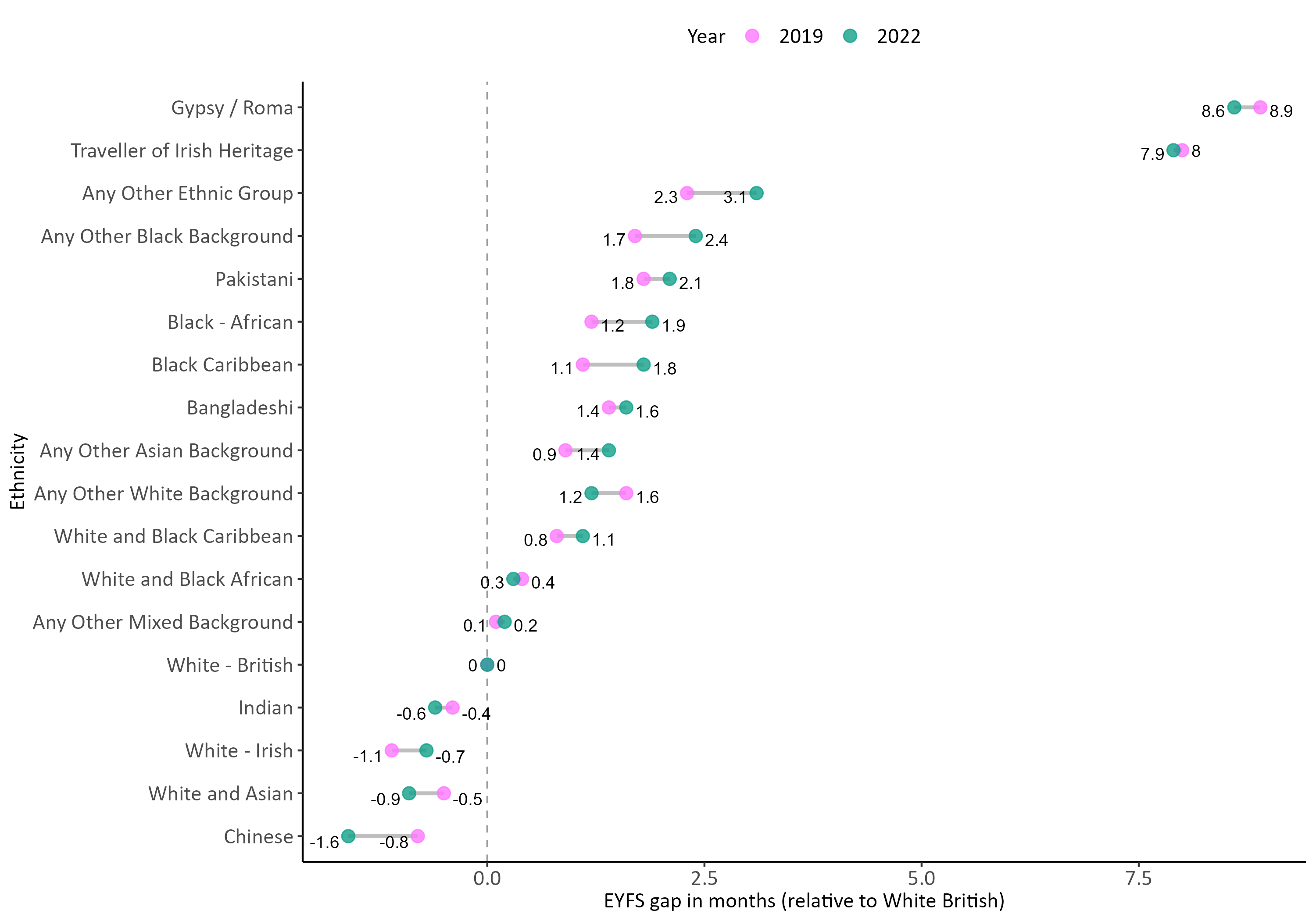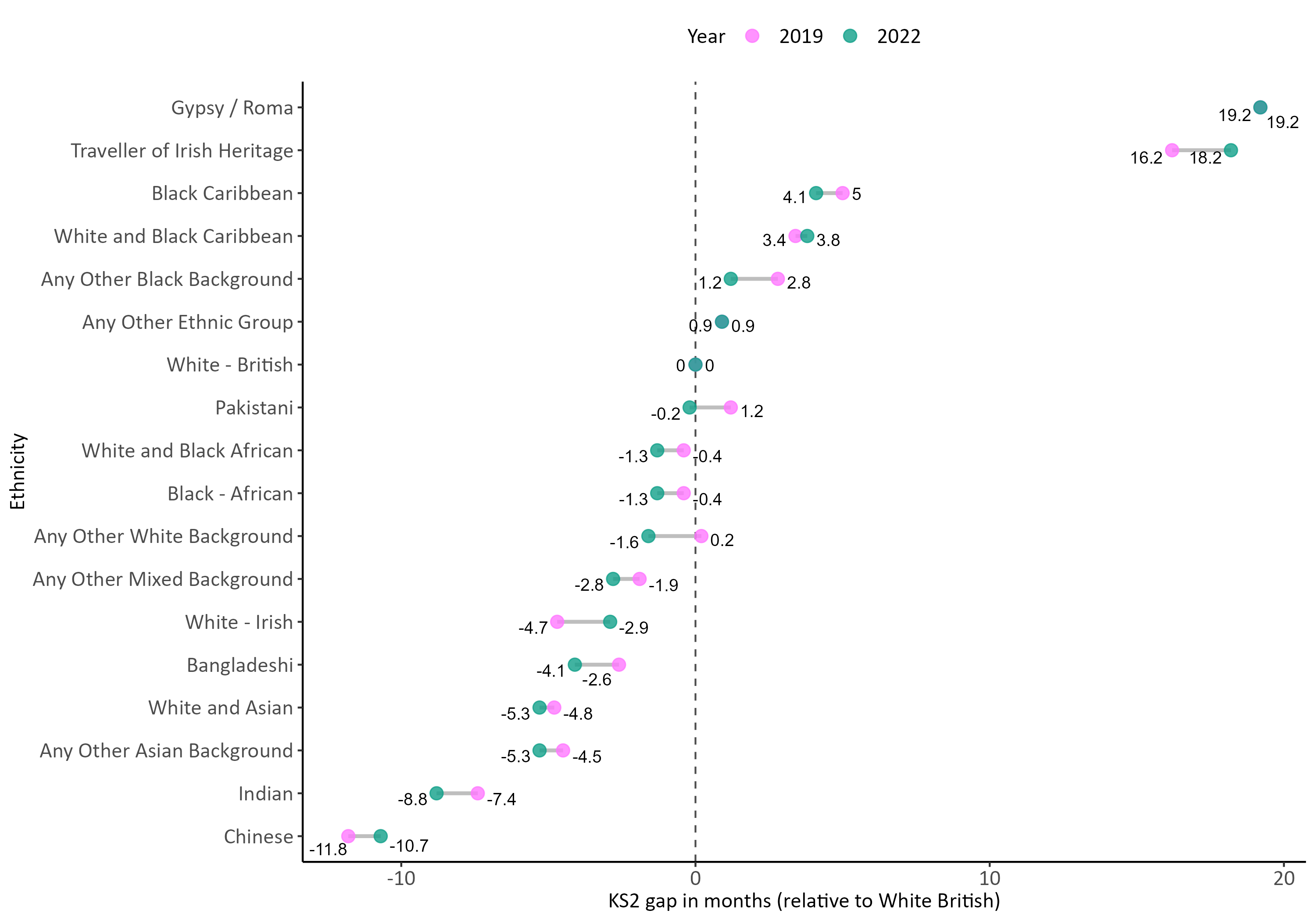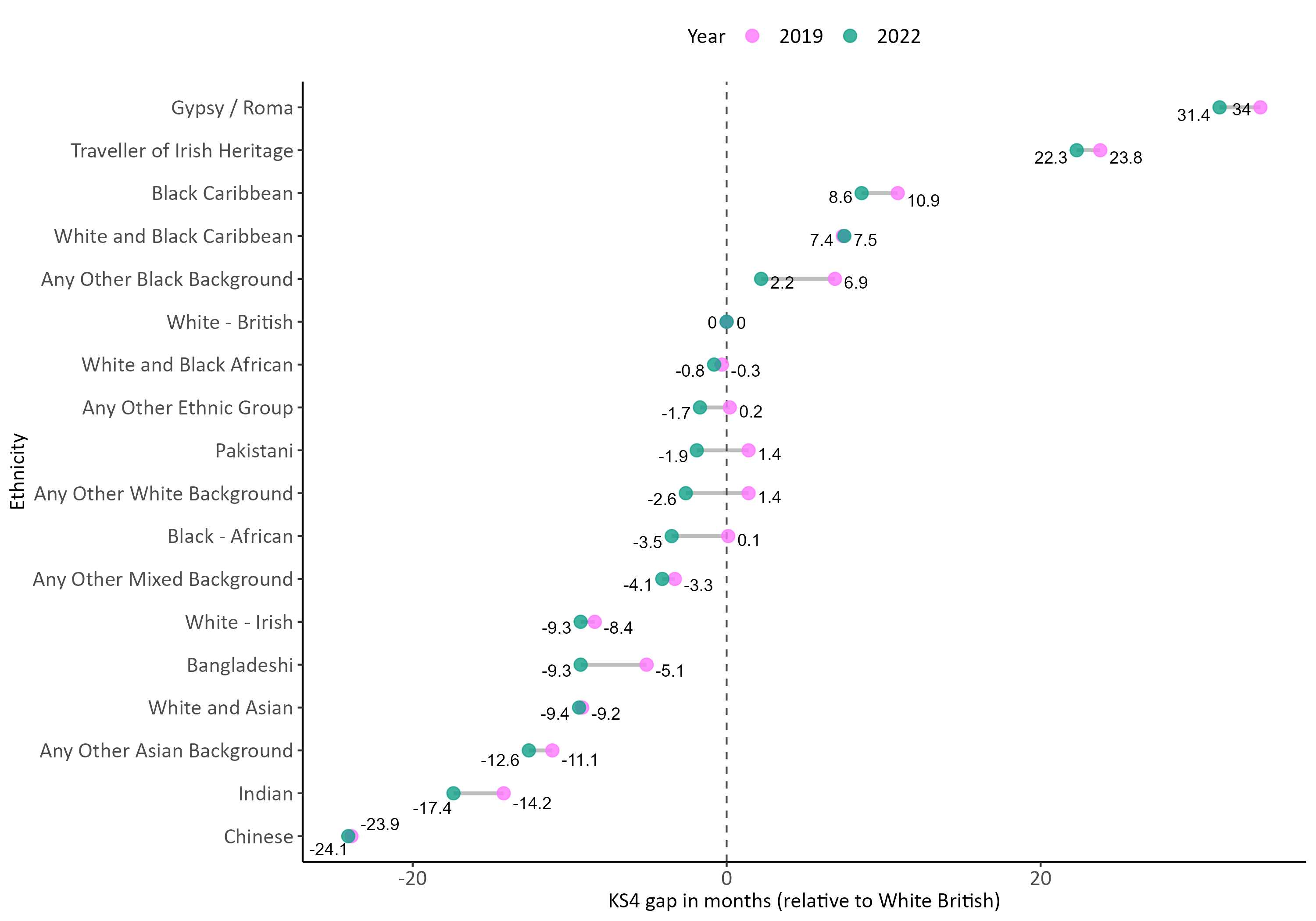Ethnicity
There is substantial variation in pupil attainment by pupils’ ethnic group. We use the largest group, White British pupils, as the comparison group, such that the gap for these pupils is set to zero in each year. As our key interest is in how the pandemic has affected attainment gaps, we show a snapshot of attainment (relative to White British pupils) for each ethnic group in both 2019 and 2022.
Early years foundation stage
At age 5, only four ethnic groups were ahead of White British pupils in 2022, namely Chinese, White and Asian, White Irish and Indian pupils. These gaps were small at under two months though, with the exception of White Irish pupils, were larger than in 2019.
Among lower-attaining groups at age 5, two ethnicities stood out as having large gaps compared with White British pupils in 2022: Gypsy Roma pupils (with a gap of 8.6 months in 2022) and Irish Traveller pupils (7.9 months). These gaps are similar to, or smaller than, their 2019 levels.
This is in contrast to most lower-attaining ethnic groups which generally saw their gaps widen in 2022 compared with 2019: these include Black African and Black Caribbean pupils, and pupils of Any Other Black Background.
Figure E1: Over the course of the pandemic, White British pupils aged 5 have pulled away from most lower-attaining ethnic groups (except those at the very bottom of the distribution) but fallen further behind those at the top

Primary school
By the end of primary school, many ethnic groups had improved their position relative to White British pupils in 2022, who were mid-ranking as opposed to being in the top third at age 5. The high attainment of Chinese and Indian pupils remains notable (ahead of White British pupils by 10.7 and 8.8 months, respectively). However so, too, is the low level of attainment among Gypsy Roma and Irish Traveller pupils, who lagged behind White British pupils by 19.2 and 18.2 months, respectively, as well as Black Caribbean, and White and Black Caribbean, pupils whose relative positions in the overall distribution both fell compared to aged 5.
When considering changes between 2019 and 2022, most ethnic groups narrowed the gap relative to White British pupils, including pupils of Any Other Black Background. In some cases, the improvement caused historically lower-attaining pupils to overtake White British pupils – namely pupils of Any Other White Background and Pakistani pupils. The exceptions were White and Black Caribbean and Irish Traveller pupils whose gaps both widened between 2019 and 2022.
Figure E2: Most ethnic groups narrowed the gap at the end of primary school (relative to White British pupils) between 2019 and 2022

Secondary school
Reflecting trends for key stage 2, some ethnic groups attained significantly better GCSE grades than White British pupils in 2022 including Chinese, Indian and pupils of Any Other Asian Background. These groups were all one to two years ahead of White British pupils in 2022, having pulled further ahead since 2019. Indeed, most ethnic groups that outperformed White British pupils in 2022 extended their lead since 2019 – including Bangladeshi pupils (as we saw at key stage 2) – or overtook White British pupils, including Black African pupils, Pakistani pupils and pupils of Any Other White Background. Although pupils of Any Other Black Background remained behind White British pupils in 2022 (by 2.2 months), the reduction of almost 5 months in the gap since 2019 is notable as the largest improvement of all ethnic groups.
The lowest attaining ethnic groups at GCSE in 2022 were Gypsy Roma pupils, Irish Traveller pupils, Black Caribbean pupils, and White and Black Caribbean pupils. However, whereas most of these groups have made some progress in narrowing the gap, White and Black Caribbean pupils stand out as the only ethnicity whose gap relative to White British pupils did not narrow between 2019 and 2022.
Figure E3: Higher-attaining ethnic groups at GCSE have pulled further away from White British pupils since 2019 and lower-attaining groups have generally narrowed the gap, though this has not been the case for White and Black Caribbean pupils

